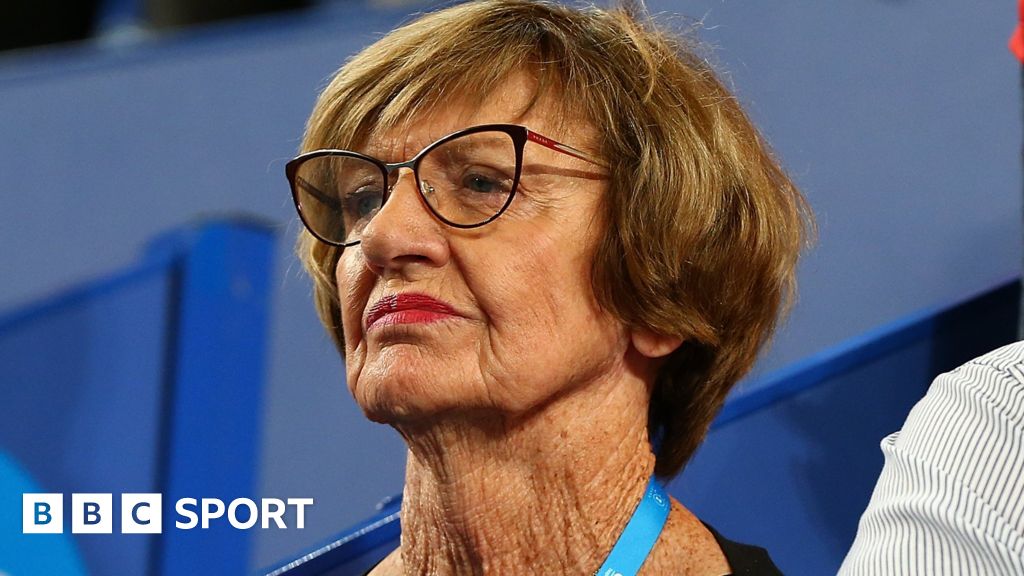By all accounts Reverend Margaret's second serve is still as vicious as ever.
-
From The Sydney Morning Herald, May 31, 2017
'The devil's after our kids': Margaret Court's second serve
By Greg Baum
Far from modifying her denouncement of gay marriage, tennis champion Margaret Court has broadened it, saying that it was causing huge problems in countries where it was legalised, that homosexuality was an ungodly "lust for the flesh" and that LGBT tendencies in young people were "all the devil".
"That's what Hitler did. That's what communism did," Court said, "get in the minds of the children. There's a whole plot in our nation and in the nations of the world to get in the minds of the children."
In the face of polls that show 65 per cent of Australians support gay marriage, Court said: "We know the statistics are very, very wrong. They're after our young ones, that's what they're after."
Court was speaking on Vision Christian Radio, elaborating on a previous letter to the West Australian and an appearance on The Project in which she said she would boycott Qantas from now on because of chief executive Alan Joyce's backing for gay marriage.
Court's issue has become Tennis Australia's problem. Calls for her name to be removed from the No.3 stadium at Melbourne Park after her first broadside had seemed excessive. But a series of players, when asked at the French Open, have criticised Court and Sam Stosur, Australia's No.1-ranked woman, has raised the possibility of a player boycott of Margaret Court Arena. Andy Murray, the world No.1-ranked man, said Tennis Australia would be wise to sort it out long before January's Australian Open.
Court, 74, is pastor at the Victory Life Centre in Perth. She said she was driven to speak out by an open, but little-publicised letter written by Queensland businessman Stuart Ballantyne, also condemning Qantas and Joyce for his gay marriage stance, linking it to Qantas' decline as a business on Joyce's watch, affecting "customer franchise and investor returns".
"This week, I have come off a Qantas flight from the US, and the plane is best described as old and shabby," Ballantyne wrote. "It needs to be clear that the personal crusade of the CEO has not impacted on the extraordinarily poor performance of the national carrier during his tenure."
Court's radio elaboration was rambling and syncopated. "It's very sad that they would use my tennis for something that is a now thing," she said, overlooking that it was her tennis that gained her a public platform in the first instance and that she was repeatedly acclaimed by the interviewer as "the greatest tennis player in history".
She said the gay lobby was a minority, yet somehow was bullying the majority. She said she had nothing against gay people, who could do as they pleased, except marry in the Christian tradition. But she also said homosexuality was a sin. "So is adultery. So is fornication," she said. "All those things are a lust for the flesh. We know it's not God. They know it, too."
In America, she said "92 per cent were abused sexually or emotionally when they were young even to be this way".
Tennis was full of lesbians, she said. In her day, there were only "a couple", but they were disproportionately influential. "They took the young ones to parties and things," she said. Schoolchildren who struggled with their sexual identities must have been raised by parents who "don't care", surmised Court. She said she was a tomboy who liked to wear shorts and could kick a footy, prompting her mother to say: "You should have been a boy." But she never had any doubt.
"If you feel like being a girl, you can dress like a girl," mused Court. "What confusion to a child. I get confused talking about it. You can think, 'I'm a boy', and it affects your emotions and feelings and everything else. That's all the devil." In her tennis-playing day, there was Renee Richards, a man who became a woman, "not a very good player".
Court said God's law on gay marriage was as clear and unambiguous as a policeman flagging down a car. "You pray there is enough people who will stand up and flag this nation down," she said. "And say, no, we are not going the way of some other nations, because they are having so many problems."
A caller hailed Court as "a prophetess, a judge", anointed by God.
To link same-sex marriage champions to Nazism and the Holocaust is "profoundly offensive, betrays an utter lack of understanding of the historical truth and only fans the flames of hatred and demonisation", says Dr Dvir Abramovich, chairman of civil rights group the Anti-Defamation commission.
"This absolute lack of compassion also insults the memory of the victims, which included gay people, as well as survivors and all those Diggers who fought against the Nazis," he said. "We urge Margaret Court to apologise for appalling and hurtful rhetoric."
-


